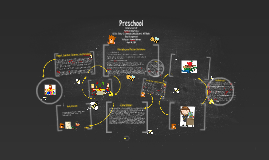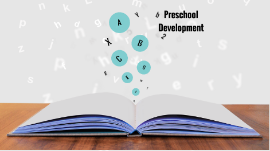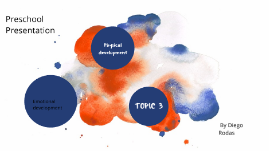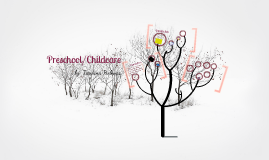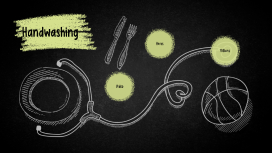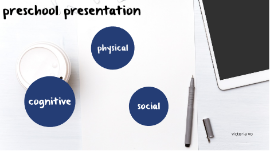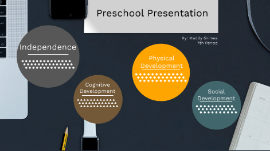Preschool Presentation
Transcript: This preschool uphold the NAEYC Standard, these standard include: - Relationships - Curriculum - Teaching - Assessment of Child Progress - Health - Teachers - Families - Community Relationships - Physical Environment - Leadership and Management These standards are important for this school to uphold so that we can provide the best enviroment possible for the children, families, and staff. References: How this program supports the teachers: “Play is our brain’s favorite way of learning.” (Diane Ackerman, (admin, 2012) Playing can help children develop and learn in so many different ways. Blocking off times during the school day where children can play will help them grow physically, cognitively, and even emotionally. Children will grow physically by play because they are using their motor skills. Their motor skills can be flexed by even playing with a jump rope. A child’s “gravity is located in the upper body; the child's lower half has not yet developed proportionally to the upper half. This imbalance renders preschoolers susceptible to falls, and they may experience difficulty while trying to balance.” (Bruen, 2014) This is why jump rope and hopping on one foot and balancing for as long as possible provide physical activity while also improving their coordination and balance. Physical Environment: Activities: As an educators we can encourage the parents to be more open with us, and come to us with any special concerns or questions. We always encourage families to get involved with their child’s education. We think that an involved family creates better students and children. We always want to include families in our activities, and make an effort to create as many opportunities as possible. Families are so important to us and the children, we want to create a relationship with all of you. Attached I have created a monthly chart of ways we include the families. Our center has flourished by having our standards in relationships, not only the relationships with the children, but especially with the families and community. Relationships should be warm and inviting, we want to have relationships with the children, families, and community, and they should want to have one with us. The NAEYC (2008) states: “an effective program establishes and maintains relationships with agencies and institutions that can support it in achieving the goals for curriculum, health promotion, children’s transitions, inclusion, and diversity. This can also help connect families with needed resources” (Children, 2008, p. 3) These types of relationships will provide our center with diversity, and help children have healthy development and learning. We have relationships with the community to help with fundraising, and also outsourcing for things like grant and scholarships for under privileged families. This is so Every child has an equal opportunity of coming to this facility. The physical domain addresses the child abilities outside of the inner mind. “The physical domain of development includes physical growth and development, gross motor development and skills, fine motor development and skills, and perceptual motor skills. The physical development of the brain is also covered in this domain” (Estes, 2012, p. 4.3). In the physical domain of development children learn how to use their selves, this means that children start to learn what they can do, such as movement of the limbs, hands, and, walking, running, and, playing. Physical growth and development include height, weight, health and neurological developments. Gross motor development includes the arms, legs, and torsos. It also includes locomotor skills, coordination, and strength. The fine motor development includes movements in the hands, feet, face, and mouth. It includes self-help skills. “These skills are used to eat, dress, and complete hygiene-related tasks such as brushing teeth, combing hair, and bathing. Self-help skills provide natural opportunities for practicing specialized movements of the hands and fingers to manipulate objects” (Estes, 2012, p.4.4). The last section of physical development is perceptual motor development, this includes sensory experiences and coordination of senses and muscle development. These physical domains are established in preschool because there is usually room for the children to use their motor skills, they can run and play in the open area, there are places for them to draw and paint at the easel or at tables. These craft tables allow them to use their creative parts of the mind. There are places where they can even learn the self-help skills, the clothing areas, where they can zip their coats and put on their hats. Mission Statement: “Tell me and I forget. Teach me and I remember. Involve me and I learn.” (Franklin, n.d.) The vision of this development center is to create an interactive, safe environment, where all children and their families feel welcome. Joseph Nowiki (2000) teaches us that: "There is a strong push to involve






